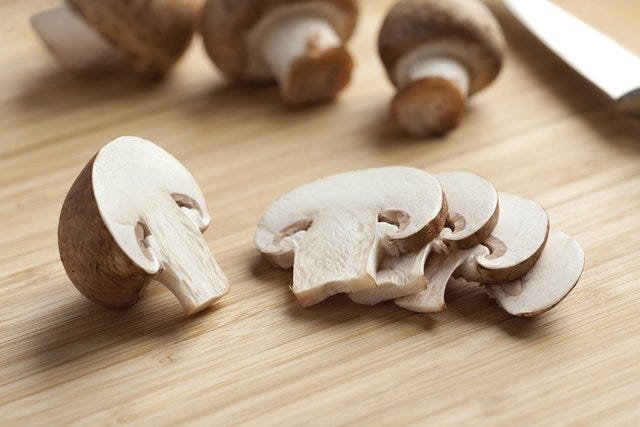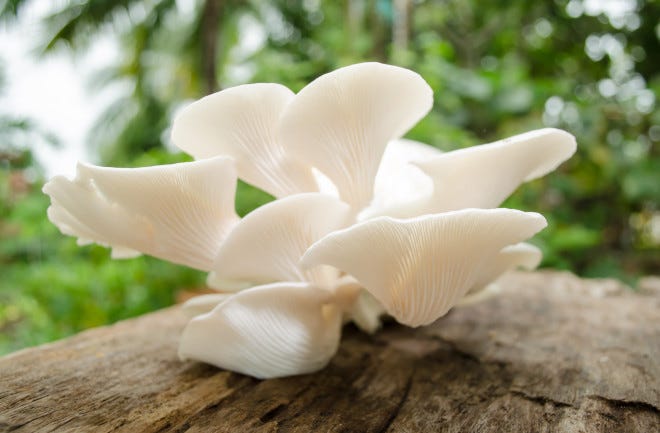Mushrooms are predicted be the ingredient of the year for 2022
Welcome back, Fungi Friday fans! Hope everyone had a nice long, healthy holiday and is rested up and ready to attack a new year. I know we are! And it just so happens, that in the year that the boys behind Fungi Friday’s, and soon to be announced, Iowa Fungi’s (shhh — that one’s still a bit of a secret still) have some awfully good timing to coincide with this years first feature article!
Why’s that? Well just this week, a New York times article has made the bold prediction that our beloved mushrooms will be the “ingredient of the year” for 2022. How exciting!
According to their article (but certainly not news to you all here) mushrooms, while being tasty, are also a nutritional powerhouse. They’re fat free, low in sodium, a good source of vitamins B and D and are also rich in selenium, a mineral that promotes a healthy functioning immune system.
The article was short and sweet, but ultimately it was a great primer on what we hope will be a great first growing season. Time to lay the foundation for big things to come… stay tuned!
Fungi Are Capturing More Carbon Than We Thought
Speaking of all the great things about mushrooms, heres another interesting article on how fungi might actually be to thank for a whole lot of carbon sequestration here on this beautiful planet we call Earth. And while many of us may not pay particularly close attention to it, if you’ve encountered a dead tree in the woods or green algae on a lake, you’ve most certainly witnessed fungi at work.
While researchers have know for some time that nearly 300 million years ago, white-rot fungi evolved the unique ability to digest lignin — the natural, tough polymer in the cell walls of trees, which was ultimately credited with ending the Carboniferous Period by decomposing woody debris that would’ve fossilized into coal, until now no one really knew what happened to the carbon inside the lignin.
That is until now. After 10 years of studying white-rot fungi, a research study published in Proceedings of the National Academy of Sciences (PNAS) may have finally found that answer. According to that study, a microbiologist was able to demonstrate that it eats the carbon in lignin to fuel its growth. This discovery flags white-rot fungi as a key player in sequestering lignin-derived carbon in soil.
In a similar study published in June out of Stanford, another microbiologist was able to show how parasitic fungi that live on tiny algae in oceans and lakes remove some of the carbon inside the algae, which might otherwise reenter the atmosphere. These fungi siphon off up to 20 percent of the algae’s carbon, and as the fungi grow, they are then consumed by larger creatures, which are then consumed by even larger creature, making their way up the food chain. And finally, these very large creatures tend to reach the end of their lives, leaving the carbon to eventually sink to the ocean floor, which also sequesters carbon, when the top species dies.
In both of the above examples, as well as several other instances discussed in the past, right here at Fungi Friday’s, there is still much to study on how fungi may be involved in carbon sequestration and overall protection of Earth. And as more and more studies are done over the years, you can be sure we will be here to cover them!
Psilocybin Does Not Produce Adverse Effects On Cognition Or Emotional Function, New Study Finds
And finally, we check back in on some new findings from our friends over at Compass Pathways! If you’ve been around these parts for a while, you should be familiar with the highly publicized COMP360 Psilocybin study conducted at King’s College London in 2019 (as we’ve covered the findings a few times!).
Well a new publication on that study, published Tuesday in the Journal of Psychopharmacology is shedding some light on the safety profile of psilocybin, the active ingredient in so-called “magic mushrooms.” The study looks at the effects of psilocybin in the cognitive and emotional functions of healthy volunteers.While psilocybin is known for its ability to reduce depression in the long term, its effects on cognitive function remain understudied.
The study looked at the effects of two doses of COMP360 psilocybin compared with placebo in 89 healthy male and female adult volunteers. Participants received either a 10mg dose, a 25mg dose or a placebo. The drug was administered simultaneously to up to six participants, who all received one-to-one psychological support from trained therapists throughout the session, which lasted about six hours. The study involved a 12 week follow-up period.
And the results? According to the paper, there were no serious adverse events and COMP360 psilocybin was found to be well-tolerated with no clinically-relevant negative effects on cognitive function.
“This rigorous study is an important first demonstration that the simultaneous administration of psilocybin is worth exploring further. If we think about how psilocybin therapy may be delivered in the future, it's important to demonstrate the feasibility and the safety of giving it to more than one person at the same time, so we can think about how we scale the treatment up,” said Dr. James Rucker, the study’s lead author.
Thank you for reading this weeks edition of Fungi Friday’s! If you enjoyed what you found, please feel free to forward to friends also interested in the Fungi Community!
Connect with me on Twitter @BowTiedMushroom
And if you were forwarded this post and enjoyed what you found, please subscribe below:




